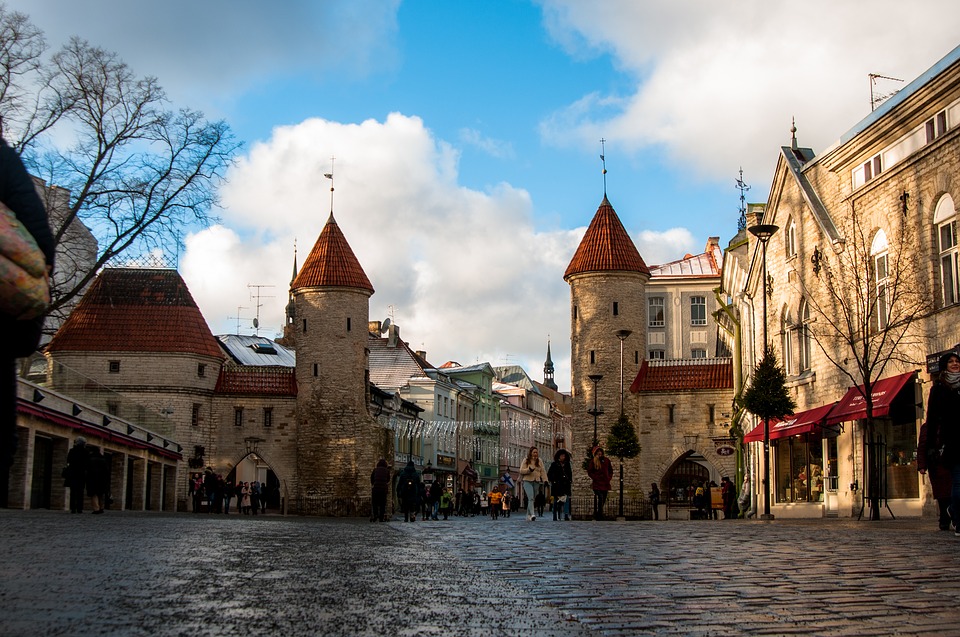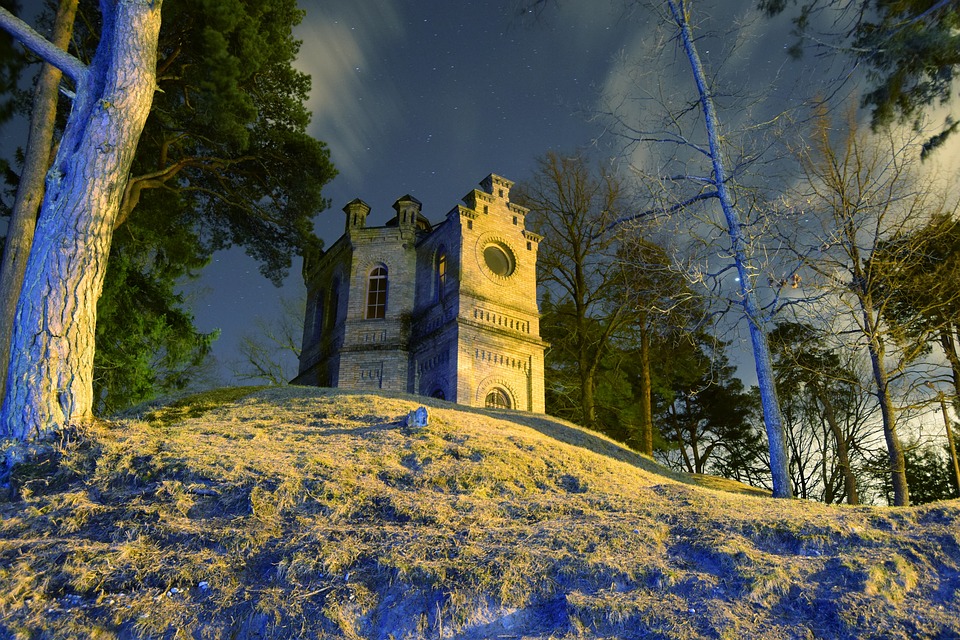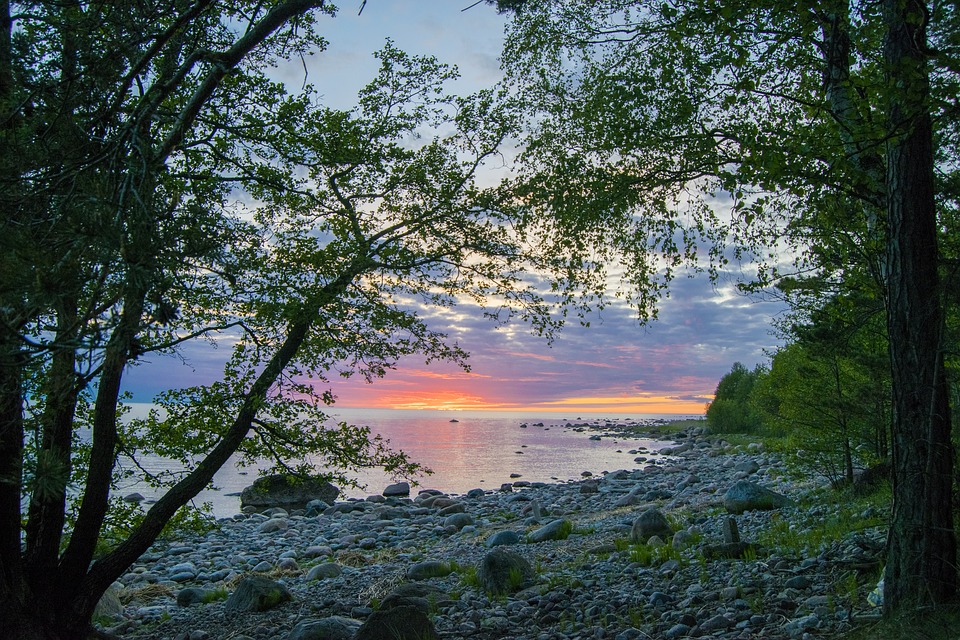Estonia
(Eesti Vabariik (Republic of Estonia))



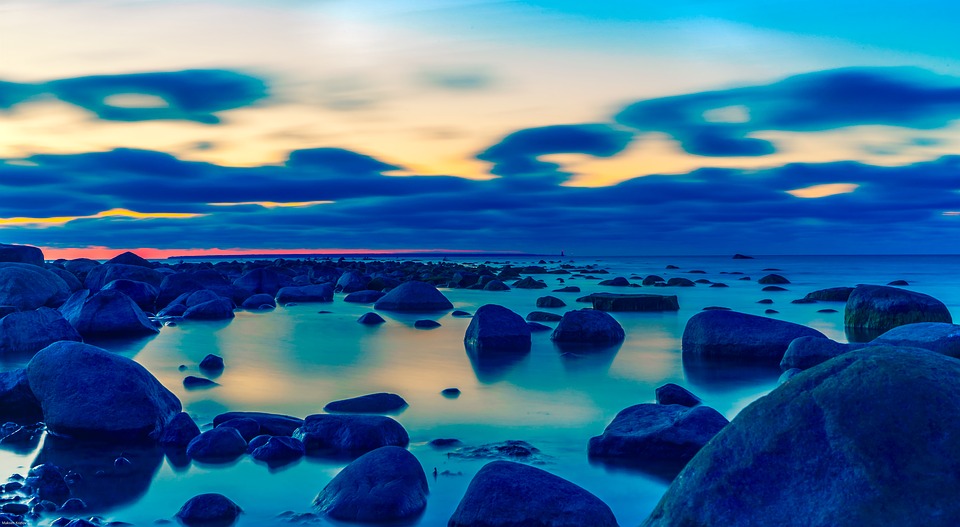
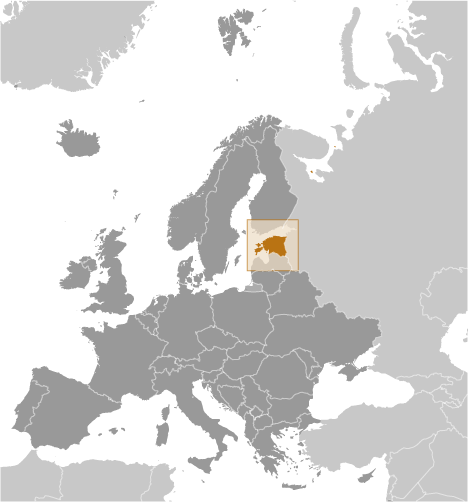




Capital of Estonia: Tallinn
Population (Estimated July 2012): 1,274,709
Area: 45,227 km2 or 17,462 mi2
Currency: Euro (€)
Official Language: Estonian
Political Information: Parliamentary Republic
Official Religion: No Official Religion (approximately 13.6% of the population are Evangelical Lutheran, 12.8% Orthodox, 34.1% are unaffiliated, 33.4% have other religious beliefs and 6.1% have no religious beliefs)
Highest Mountain: Suur Munamagi at 318m or 1,043ft
GDP Official Exchange Rate (OER is more precise at gauging a countries economic power)
(Estimated 2011): $22.5 billion (US$) or (GBP)
GDP (OER) Per Capita (per member of the population estimated 2011): (US$) or (GBP)
GDP Purchasing Power Parity (PPP is good for gauging living conditions and use of resources but not as accurate as OER. This data has been calculated based on the sum value of all goods and services produced in the country valued at prices prevailing in the United States)
(Estimated 2011): $27.02 billion (US$) or (GBP)
GDP (PPP) Per Capita (per member of the population estimated 2011): $20,200 (US$) or (GBP)
Time Zone (GMT/UTC): +2:00
Counties/Provinces/States: 15 counties (maakonnad, singular – maakond); Harjumaa (Tallinn), Hiiumaa (Kardla), Ida-Virumaa (Johvi), Jarvamaa (Paide), Jogevamaa (Jogeva), Laanemaa (Haapsalu), Laane-Virumaa (Rakvere), Parnumaa (Parnu), Polvamaa (Polva), Raplamaa (Rapla), Saaremaa (Kuressaare), Tartumaa (Tartu), Valgamaa (Valga), Viljandimaa (Viljandi), Vorumaa (Voru)
note: counties have the administrative center name following in parentheses
Leaders: President Toomas Hendrik Ilves with Andrus Ansip as Prime Minister.
Additional: Independence from Russia was officially recognised on the 2nd of February 1920 however due to World War II Soviet forces re-occupied Estonia between 1940 and 1941, then by the Germans between 1941 and 1944. Estonia was then under Russian occupation again from 1944 until 20th August 1991 when their independence was restored.
Sources: CIA World Fact Book, Encyclopaedia Britannica.
Estonia
Estonia, a small country in Northern Europe, is known for its rich history, beautiful landscapes, and vibrant culture. With a population of just over 1.3 million people, Estonia is one of the smallest countries in the European Union. The capital city, Tallinn, is a popular tourist destination, known for its well-preserved medieval old town and stunning architecture. Estonia is also famous for its digital innovation, with a highly developed e-government system and a thriving tech industry. The country has a unique blend of Nordic, Baltic, and Russian influences, which is reflected in its language, cuisine, and traditions. Estonia’s natural beauty, from its pristine coastline to its dense forests and picturesque lakes, makes it a popular destination for nature lovers and outdoor enthusiasts.
Estonia has a fascinating history, having been ruled by various powers throughout the centuries, including the Danes, Swedes, Germans, and Russians. The country gained independence from the Soviet Union in 1991 and has since undergone rapid economic and social development. Estonia is a member of the European Union, NATO, and the Schengen Area, and it has embraced Western values while also preserving its unique cultural identity. The country has a high standard of living and is known for its progressive policies, including e-residency, which allows people from all over the world to start and run businesses in Estonia. With its rich history, diverse culture, and stunning natural landscapes, Estonia is a hidden gem waiting to be explored.
History and Culture of Estonia
Estonia has a rich and complex history that has shaped its unique culture and identity. The country’s history dates back thousands of years, with evidence of human settlement dating back to the Mesolithic period. Throughout its history, Estonia has been influenced by various powers, including the Vikings, Germans, Swedes, and Russians. In 1918, Estonia declared independence from Russia, only to be occupied by the Soviet Union in 1940 and then by Nazi Germany during World War
After the war, Estonia was once again incorporated into the Soviet Union until it regained independence in 1991. This tumultuous history has left its mark on Estonian culture, with a strong sense of national pride and resilience.
Estonia’s culture is a unique blend of Nordic, Baltic, and Russian influences, reflected in its language, music, art, and traditions. The country is known for its vibrant folk music and dance traditions, with colourful costumes and lively performances that celebrate the country’s heritage. Estonian cuisine is also influenced by its diverse history, with dishes featuring local ingredients such as fish, potatoes, and rye bread. The country’s rich cultural heritage is celebrated through various festivals and events throughout the year, showcasing traditional music, dance, and crafts. Estonia’s cultural scene is also thriving, with a growing number of artists, musicians, and designers gaining international recognition. From its ancient roots to its modern innovations, Estonia’s history and culture are an integral part of what makes the country so special.
Geography and Climate of Estonia
Estonia is a small country located in Northern Europe, bordered by the Baltic Sea to the west and the Gulf of Finland to the north. The country’s diverse landscape includes a pristine coastline, dense forests, picturesque lakes, and rolling hills. Estonia is known for its natural beauty, with over half of its land covered by forests and numerous protected areas that are home to a wide variety of flora and fauna. The country’s numerous islands, including Saaremaa and Hiiumaa, are popular destinations for nature lovers and offer opportunities for hiking, birdwatching, and relaxation by the sea.
Estonia has a temperate climate with four distinct seasons. Summers are mild and pleasant, with long daylight hours that make it an ideal time for outdoor activities. Winters can be cold and snowy, especially in the eastern part of the country, where temperatures can drop well below freezing. Spring and autumn are transitional seasons with changing weather patterns and beautiful displays of nature as the landscape transforms. The country experiences a fair amount of rainfall throughout the year, which contributes to its lush greenery and abundant wildlife. With its diverse geography and ever-changing climate, Estonia offers something for everyone, whether you’re seeking outdoor adventure or simply want to immerse yourself in the beauty of nature.
Economy and Industry in Estonia
Estonia has undergone rapid economic development since gaining independence from the Soviet Union in 1991. The country has transitioned from a centrally planned economy to a market-based economy with a strong emphasis on innovation and technology. Estonia is known for its digital innovation and e-government system, which has streamlined processes and made it easier for businesses to operate in the country. The tech industry is a major driver of the economy, with a growing number of startups and tech companies gaining international recognition. Estonia has also attracted foreign investment in various sectors, including manufacturing, logistics, and finance.
The country’s strategic location on the Baltic Sea has made it an important hub for trade and transportation in Northern Europe. The port of Tallinn is one of the busiest in the region, handling a significant amount of cargo and passenger traffic. Estonia’s diverse economy also includes agriculture, forestry, and tourism, with the latter becoming an increasingly important sector due to the country’s natural beauty and cultural attractions. The government has implemented pro-business policies to attract investment and promote entrepreneurship, making Estonia an attractive destination for both local and foreign businesses. With its dynamic economy and focus on innovation, Estonia is well-positioned for continued growth and prosperity in the years to come.
Government and Politics in Estonia
Estonia is a parliamentary republic with a multi-party political system. The country’s government is divided into three branches: the executive branch led by the Prime Minister, the legislative branch consisting of the unicameral Parliament (Riigikogu), and the judicial branch headed by the Supreme Court. Estonia gained independence from the Soviet Union in 1991 and has since established a democratic system based on the rule of law and respect for human rights. The country is known for its progressive policies, including e-residency, which allows people from all over the world to start and run businesses in Estonia.
Estonia is a member of the European Union, NATO, and the Schengen Area, and it has embraced Western values while also preserving its unique cultural identity. The government has implemented various reforms to modernise the country’s institutions and promote transparency and accountability. Estonia’s political landscape is characterised by a diverse range of political parties representing different ideologies and interests. The country has made significant strides in promoting gender equality and LGBTQ+ rights, with several women holding key positions in government and society. With its commitment to democracy and human rights, Estonia continues to play an important role in shaping the future of Europe.
Education and Healthcare in Estonia
Estonia places a strong emphasis on education and healthcare as fundamental pillars of its social welfare system. The country has a well-developed education system that provides free education at all levels, from preschool to university. Estonian students consistently perform well in international assessments of academic achievement, reflecting the high quality of education in the country. The government has invested in modernising schools and promoting digital literacy to prepare students for success in the 21st century. Higher education institutions in Estonia offer a wide range of degree programmes in various fields, attracting students from around the world.
Estonia also provides universal healthcare coverage to its citizens through a national health insurance system. The country has made significant investments in healthcare infrastructure and technology to ensure access to high-quality medical services for all residents. The government has implemented various public health initiatives to promote healthy lifestyles and prevent diseases. Estonia’s healthcare system is characterised by a strong focus on preventive care and patient-centred services. The country has also been at the forefront of digital innovation in healthcare, with electronic health records and e-prescriptions that have improved efficiency and patient outcomes. With its commitment to providing accessible education and healthcare services, Estonia is dedicated to ensuring the well-being of its citizens.
Tourism and Attractions in Estonia
Estonia is a hidden gem waiting to be discovered by travellers seeking natural beauty, rich history, and vibrant culture. The capital city of Tallinn is a popular tourist destination known for its well-preserved medieval old town, stunning architecture, and charming cobblestone streets. Visitors can explore historic landmarks such as Toompea Castle, Alexander Nevsky Cathedral, and St. Olaf’s Church while immersing themselves in the city’s unique atmosphere. Tallinn also offers a thriving culinary scene with traditional Estonian dishes as well as international cuisine.
Beyond Tallinn, Estonia boasts numerous attractions that showcase its natural beauty and cultural heritage. Lahemaa National Park is a must-visit destination for nature lovers, offering diverse landscapes including forests, bogs, lakes, and coastal areas. The park is home to various species of wildlife and provides opportunities for hiking, birdwatching, and exploring ancient manors. Saaremaa Island is another popular destination known for its picturesque countryside, historic windmills, and unique culture. Visitors can relax on sandy beaches or visit local artisans producing traditional handicrafts.
Estonia’s rich history is also reflected in its numerous castles and manor houses scattered throughout the countryside. These historic landmarks offer insight into the country’s past while providing stunning backdrops for photography enthusiasts. The country’s vibrant cultural scene includes numerous festivals celebrating music, dance, art, and traditional crafts throughout the year. From ancient ruins to modern innovations, Estonia offers something for every type of traveller looking to explore this enchanting corner of Northern Europe.
FAQs
What is the capital of Estonia?
The capital of Estonia is Tallinn.
What is the population of Estonia?
As of 2021, the population of Estonia is approximately 1.3 million people.
What is the official language of Estonia?
The official language of Estonia is Estonian.
What is the currency used in Estonia?
The currency used in Estonia is the Euro (EUR).
What are some popular tourist attractions in Estonia?
Some popular tourist attractions in Estonia include Tallinn Old Town, Lahemaa National Park, Kadriorg Palace, and the Estonian Open Air Museum.
What is the climate like in Estonia?
Estonia has a temperate climate, with warm summers and cold winters. The country experiences all four seasons.
What are some traditional dishes in Estonian cuisine?
Some traditional dishes in Estonian cuisine include black bread, herring, kama (a traditional Estonian finely milled flour mixture), and kohuke (a sweet curd snack).
What are some famous Estonians?
Some famous Estonians include composer Arvo Pärt, writer Jaan Kross, and former President Toomas Hendrik Ilves.
Climate Zones Of Estonia: Different climate regions Of Estonia
Estonia, a small country in Northern Europe, is known for its diverse climate zones. The country is divided into four main climate regions: coastal, continental, maritime, and subarctic. Each of these regions has its own unique characteristics and influences the...
Political Boundaries of Estonia: Provinces, Districts, or Historical Boundaries.
Estonia, a small country in Northern Europe, is known for its rich history and unique political boundaries. The country is bordered by the Gulf of Finland to the north, the Baltic Sea to the west, Latvia to the south, and Russia to the east. Estonia’s political...
Terrain and Topography of Estonia: mountains, valleys, and plains.
Estonia, a small country in Northern Europe, is known for its diverse and unique terrain and topography. The country is characterized by its flat coastal lowlands, rolling plains, hilly landscapes, and numerous rivers and valleys. The terrain of Estonia has been...
History of Estonia
Estonia’s history dates back to the early settlements of the indigenous Finno-Ugric tribes, such as the Estonians, Livonians, and Setos. These tribes lived in the region for thousands of years, developing their own unique culture and traditions. The Viking Age,...
Natural Resources of Estonia: Where Natural Resources are located In Estonia
Estonia, a small country in Northern Europe, is blessed with a diverse range of natural resources that have played a significant role in shaping its economy and culture. From lush forests and abundant water resources to valuable mineral deposits and fertile...
Cultural or Historical Sites of Estonia: Important Cultural Landmarks or Historical Sites in Estonia
Estonia, a small Baltic country in Northern Europe, is a land of rich cultural and historical heritage. From medieval old towns to pristine national parks, Estonia offers a diverse range of cultural and historical sites that showcase the country’s unique...
Population Density of Estonia
Population density refers to the number of people living in a specific area, usually measured in square kilometres or square miles. It is an important demographic indicator that provides insights into the distribution of people within a given region. Population...
Exploring the Charm and Innovation of Estonia: A Journey Through the Land of the Tallinn
Nestled in Northern Europe, Estonia is a small but vibrant country with a population of just over 1.3 million people. Despite its size, Estonia has made a name for itself on the global stage with its unique culture, rich history, and commitment to innovation. Located...
